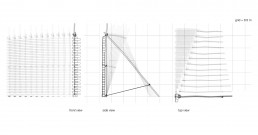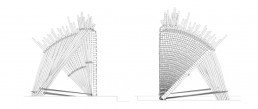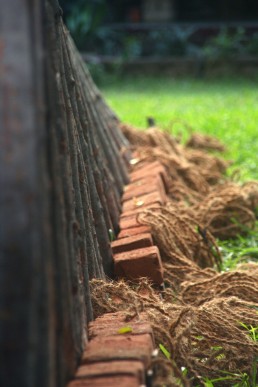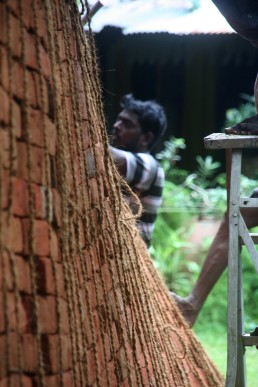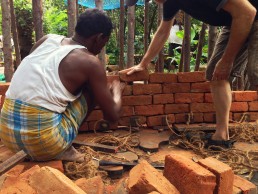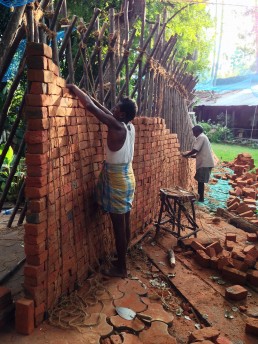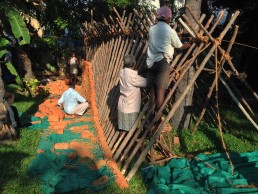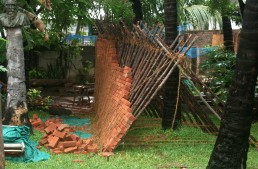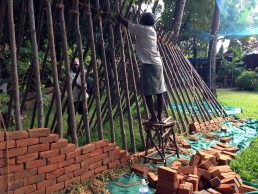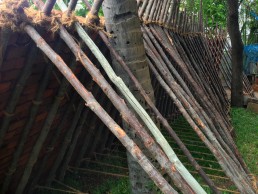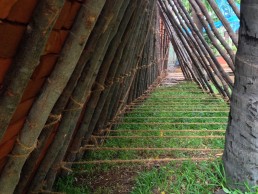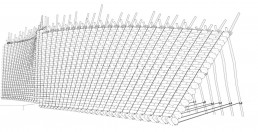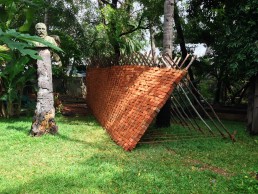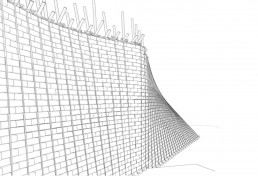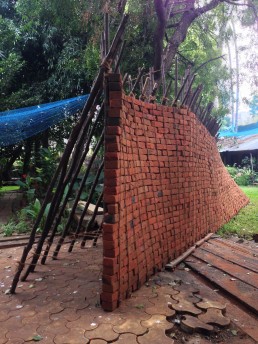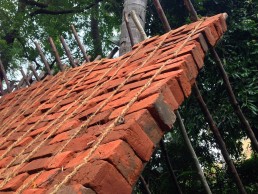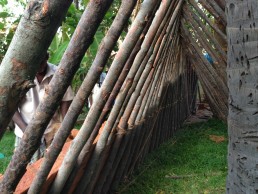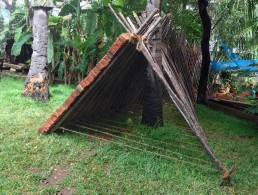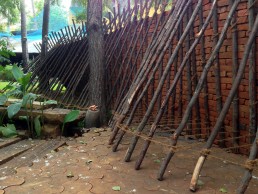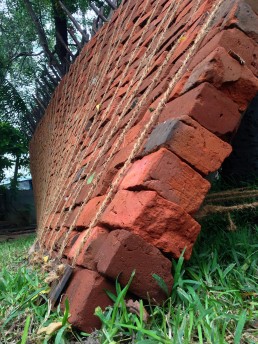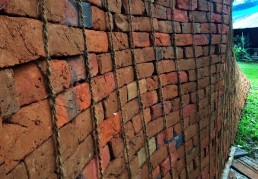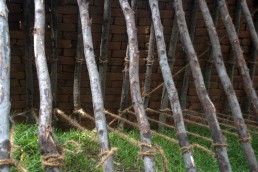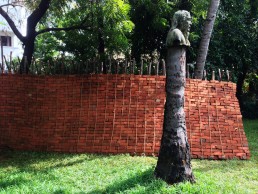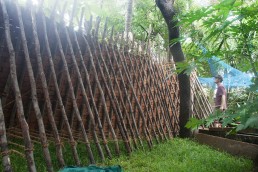“falling: catching”, installation, 2014
installation, Krtashreya Aurodhan Gallery Garden, Pondicherry, India, 2014-present
“falling: catching” is a semi-improvised architectural installation that uses some of the most ubiquitous of Indian construction materials to create a ‘frozen moment in time’. Bricks and jute-tied scaffolding are arranged as a wall that is seemingly both in the process of tipping over and being ‘caught’.
Read More
At its most basic, “falling: catching” is simply a wall, sited in a garden. Conventionally, walls separate and delineate space. Walls define borders and property boundaries, they separate the inside from the outside. Oftentimes, walls support beams or floor slabs. Though walls may have decorative elements, their primary aspect is that they are upright, vertical, and defy gravity. Positioned as it is though, crossing diagonally through the garden, this wall is in the wrong place, as it is ‘in the middle of things’, rather than on the periphery. Also, it is moving progressively away from its native verticality, undulating on its way to a new normal. It might be said, this installation is a ‘hacked’ wall. The wall’s length seems incomplete, seemingly its action is paused mid-stride. Is it on its way to horizontality or to collapse?
“falling: catching” is delicately poised, the mortarless bricks held in place by the shifting forces in the interconnected gravity held system. The upright end of the wall seems to become progressively less wall-like, towards the falling over end. Seemingly, its on its way to becoming a kind of shelter. The rows of friction-held interlocking bricks are bound to the scaffold by jute, giving an impression of weaving. There is an aspect of call and response – as it is both specifically prescribed (‘architected’) in advance as well as craftily adapted to the specifics of the limited access site.

